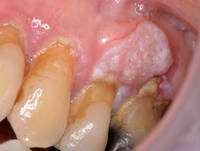
17 Dec Mouth and Throat Cancers Increasing, with Gender, Race and Regional Differences in US
MedicalResearch.com Interview with:

Dr. Deshmukh
Ashish A. Deshmukh, PhD, MPH
Associate Professor, Management, Policy & Community Health
Associate Director, Center for Health Services Research
Co-director, Clinical Analytics and Decision Science Lab
UTHealth School of Public Health
Houston, TX 77030
MedicalResearch.com: What is the background for this study?
Response: Oropharyngeal cancer is the most common cancer caused by human papillomavirus (HPV) in the United States (US). We know from previous studies that oropharyngeal cancer to be one of the fastest rising cancers in the US. However, trends (i.e., extent of change) in incidence rates among men and women in all 50 US states and trends according to tumor diagnostic characteristics (i.e., stage, size) have not been comprehensively studied. In addition, no prior study evaluated contemporary trends in oropharyngeal cancer mortality (death) rates in the US. Our study provides a comprehensive picture of oropharyngeal cancer incidence and mortality (according to age, stage, tumor size, and state of residence) in all 50 states and DC.

Just one example of oral cancer. Cancer can occur anywhere in mouth or throat, including lips and tongue.DermNet image.
MedicalResearch.com: Are these tumors due to HPV and if so, what subtypes?
Response: Over 70% of all oropharyngeal cancer cases are caused by HPV, where HPV16 is responsible for over 90% of new HPV-positive cases.
MedicalResearch.com: What are the main findings?
- Oropharyngeal cancer incidence among men increased nationally 2.7% per year from 2001 to 2017, with notable (over 3% per year) increases were observed among White men and men aged 65 years or older. States seeing a marked increase in oropharyngeal cancer incidence among men are mostly from the Midwest and Southeast regions—e.g., South Dakota (6% per year rise), Kansas (~5% per year rise), Iowa (4% per year rise), Ohio, Kentucky, West Virginia, Tennessee (all ~4% per year rise).
- Our study is also the first to report that women living in the Midwest and Southeast regions are increasingly suffering from this disease, with an over 2% annual increase in oropharyngeal cancer incidence—e.g., Louisiana, Arkansas, Kentucky saw 3% per year rise, Indiana, Ohio, Iowa all saw over 2% per year increase.
- Oropharyngeal cancer incidence increased for every tumor size among men and women, with prominent increases occurring for large (greater than 4 cm) tumors.
- Unfortunately, we also report that the oropharyngeal cancer death rate has increased 2% per year among men in recent years.
MedicalResearch.com: Would increased HPV vaccination lower the risk?
- HPV vaccination can prevent oropharyngeal cancer among our adolescents. Improving HPV vaccination uptake among adolescents is key to achieving maximum cancer prevention benefits and ensuring that we eradicate oropharyngeal cancer over the 21st
MedicalResearch.com: What recommendations do you have for future research as a result of this work?
There are several implications:
- Unfortunately, HPV vaccination rates are some of the lowest in the Midwestern and Southern states that are also seeing a pronounced increase in oropharyngeal cancer incidence. If we do not act now, the geographic disparities in oropharyngeal cancer incidence that we document will magnify.
- Future research is needed to understand distinct geographic patterns, notably, what might be leading to the rise in oropharyngeal cancer incidence among women living in the Midwest and Southeast.
No disclosures.
Citation:
Damgacioglu H, Sonawane K, Zhu Y, et al. Oropharyngeal Cancer Incidence and Mortality Trends in All 50 States in the US, 2001-2017. JAMA Otolaryngol Head Neck Surg. Published online December 16, 2021. doi:10.1001/jamaoto.2021.3567
JOIN OUR EMAIL LIST
[mailpoet_form id="5"]We respect your privacy and will never share your details.
[last-modified]
The information on MedicalResearch.com is provided for educational purposes only, and is in no way intended to diagnose, cure, or treat any medical or other condition. Always seek the advice of your physician or other qualified health and ask your doctor any questions you may have regarding a medical condition. In addition to all other limitations and disclaimers in this agreement, service provider and its third party providers disclaim any liability or loss in connection with the content provided on this website.
Last Updated on December 17, 2021 by Marie Benz MD FAAD
